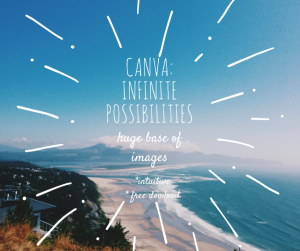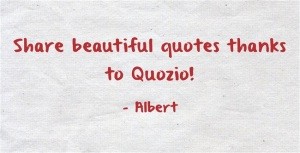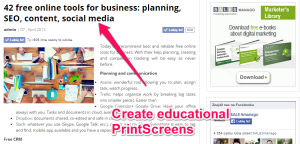 Do you know how readers consume content? They stay only for a short period (less than 10 seconds) on most pages, and 41% of them shift focus between two or more devices (multiscreening). They jump tirelessly from text to text, from information to information, scanning and screening. What does it mean to marketers? That they should create micro-content!
Do you know how readers consume content? They stay only for a short period (less than 10 seconds) on most pages, and 41% of them shift focus between two or more devices (multiscreening). They jump tirelessly from text to text, from information to information, scanning and screening. What does it mean to marketers? That they should create micro-content!
Micro-content is the future?
The term “micro-content” denoted originally all small chunks of text exposed on the page, like title, headlines, frames, which could be scanned fast and didn’t require reading the whole piece (according to Jakob Nielsen). Then the word started to describe independent bites of information, displayed often in an easy to digest form, like infographic or table. You look at it at get the message instantly (Anil Dash’s definition).
A Meme
An excellent example of micro-content is a meme: you grasp the in a fraction of a second, bursting into laughter or blowing a fuse or just ignoring it. The process of content consumption and reaction to it (share or forget) shortens.
Examples of micro-content
Don’t worry – we don’t encourage you to start generating memes. Here is a list of forms of micro-content you can use:
- Infographic, data visualization (here you will find some examples of creative infographic)
- Image with quote (could be also from your own blog post or ebook – add a nice background and promote it in social media)
- Illustration
- Video
- Animated gif
- Short presentation
- Interactive forms.
Advantages for the reader
Reader can consume micro-content really fast: it takes a second and gives a sense of acquiring new information. Moreover, more visual form simplifies understanding process and reduces cognitive effort – no need for long analysis of extensive text: the sense lies just in front of you.
Advantages for a producer
Producing micro-content is more economic: you can create more pieces in less amount of time. That way you can deliver content on regular basis without sacrificing its quality. How many blog post comes to lights only for sake of “we should have a company blog” paradigm? Forced writing, pumping up posts’ volume without offering real value can be replaced with small user-friendly chunks of knowledge. And you can use them in social media!
Will content marketing change?
Growing popularity of micro-content doesn’t mean end or radical change of content marketing. Still you should create informative, helpful, knowledge-rich guides, reports, ebooks, whitepapers.
Micro-content will however let you promote that “big” content better by reusing it. If you wrote a massive report, prepare a couple of infographics with data or charts, a handful of quotes with your findings. Make sure that these small excerpts are understandable outside the context.
How to Create Micro-Content
Your micro-content (e.g. image or gif) must be understandable outside its original context (your website or fanpage). Users will share your piece on their sites, without your comment, so it must be self-explanatory.
Therefore it should:
- Carry a clear message
- Communicate something useful and/or specific (data, life hack)
- Be concise
- Make sense outside original context (it can’t require comment)
- Include CTA and/or brand
- Be suitable for social media (e.g. on terms of size; the tools we recommend below will handle that for you).
- Be based on analysis of your customers’ needs. Just like in case of longer forms, you should be founded on analytics users’ behavior and interests. Read more on synergy between content marketing and marketing automation
Free tools
Pablo: allows to create micro-content in less than 30 seconds (really!). It limits itself to simple images with text, you can upload your own photos or use their base. Extremely user-friendly and fast.
Canva: for more advanced tasks. Choose from wide array of templates and images or upload your own. There are many materials to use there, many possibilities to explore, so you can use it on regular basis. Requires registration.
Quozio: insert a quote and its author, and then pick the style. Not too many options, but it’s easy and nice. Use it when you want to serve something slightly different to your audience.
Skitch: app developed by Evernote team (we recommended Evernote already as a great free tool), it makes a printscreen and allows to edit it conveniently – add text, arrows, etc. Great for creating educational micro-content. Download required.
Do you create micro-content? Share your experience!




 Follow
Follow
















